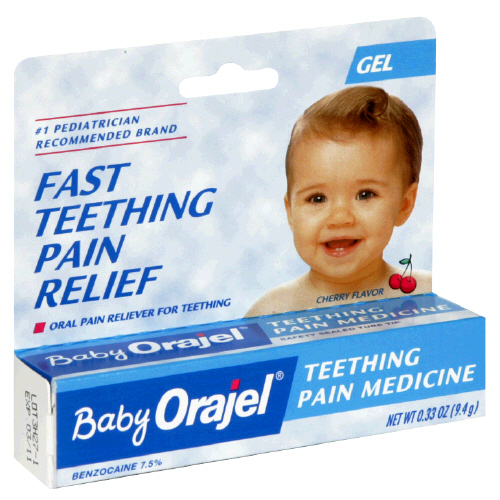Teething can be a challenging and distressing time for both infants and their parents. When those little teeth begin to push through the gums, it can cause discomfort that leads to fussiness, sleepless nights, and endless tears. This is where Oragel for infants comes into play, offering a solution to help soothe your baby's pain. However, as with any medication, it’s essential to understand its use, safety, and effectiveness to ensure the best care for your little one.
Parents often find themselves navigating the stormy seas of teething, searching for answers and remedies to help their child. Oragel for infants is designed specifically for this purpose, providing targeted relief to ease the discomfort associated with teething. Understanding how to use this product safely and effectively can make a world of difference in both your baby’s well-being and your peace of mind.
In this article, we will delve into the details of Oragel for infants, exploring how it works, its safety profile, and tips for its application. Whether you’re a first-time parent or adding another little one to your family, this guide aims to provide the insights needed to make informed decisions about your infant's teething relief.
What is Oragel for Infants and How Does It Work?
Oragel for infants is a topical anesthetic specifically formulated to address teething discomfort in babies. It contains benzocaine, a local anesthetic that temporarily numbs the area applied, providing quick relief from pain. The gel is designed to be applied directly to the gums, targeting the source of discomfort and helping to soothe the baby.
Is Oragel for Infants Safe?
The safety of Oragel for infants has been a topic of discussion among parents and pediatricians alike. While it is marketed for infants, it is crucial to follow the recommended guidelines regarding age and dosage. Parents should consult with their pediatrician before using the product, especially if the infant is less than two years old. Overuse or misuse of benzocaine products can lead to serious side effects, including a rare but dangerous condition known as methemoglobinemia, which affects oxygen delivery in the blood.
What are the Recommended Dosage Guidelines for Oragel for Infants?
- Consult with your pediatrician before using Oragel for infants.
- Follow the dosage instructions provided on the product label.
- Use only a small amount, applying it directly to the affected area.
- Avoid using more than the recommended frequency to prevent complications.
How Do You Apply Oragel for Infants Properly?
Applying Oragel for infants correctly is key to ensuring its effectiveness. Here’s a step-by-step guide to help parents:
- Wash your hands thoroughly before handling the product.
- Gently clean the area around your infant’s mouth to remove any food particles or debris.
- Use a clean fingertip or cotton swab to apply a small amount of Oragel directly to the sore gums.
- Monitor your baby for any adverse reactions and consult a healthcare provider if necessary.
What Alternatives to Oragel for Infants Are Available?
If you’re hesitant to use Oragel for infants, there are several alternative methods to soothe your baby’s teething pain:
- Cold Compresses: A cold washcloth or teething ring can provide relief. Chilling them in the refrigerator before use can enhance their soothing effect.
- Teething Toys: Offer your baby safe, soft toys designed for teething. They can chew on these to alleviate discomfort.
- Homeopathic Remedies: Consult your pediatrician about any homeopathic options that may be safe and effective for your infant.
- Pediatrician Recommendations: Always seek professional advice for pain relief methods tailored to your baby's specific needs.
What are the Common Side Effects of Oragel for Infants?
While Oragel can provide much-needed relief, it’s essential to be aware of potential side effects. Common side effects may include:
- Localized irritation or redness at the application site.
- Swelling of the gums or mouth.
- Allergic reactions, though rare, can occur.
Always monitor your baby after application and seek medical attention if you notice any unusual symptoms or if your child appears to be in distress.
When Should You Contact a Pediatrician Regarding Oragel for Infants?
It’s important to remain vigilant when using Oragel for infants. You should contact your pediatrician if:
- Your baby experiences severe or prolonged pain despite using the product.
- You notice signs of an allergic reaction, such as difficulty breathing or swelling.
- There are any unusual symptoms following application, such as excessive drowsiness or confusion.
Conclusion: Is Oragel for Infants Right for Your Baby?
Oragel for infants can be an effective solution for relieving teething pain when used correctly. However, it’s crucial for parents to stay informed about the product, consult with healthcare professionals, and consider alternative methods for pain relief. Ultimately, ensuring your baby’s comfort and well-being should always be the top priority.




